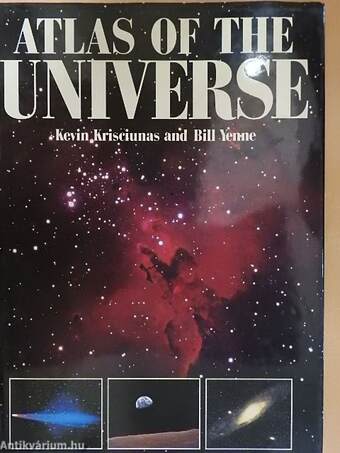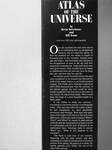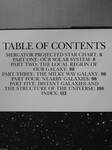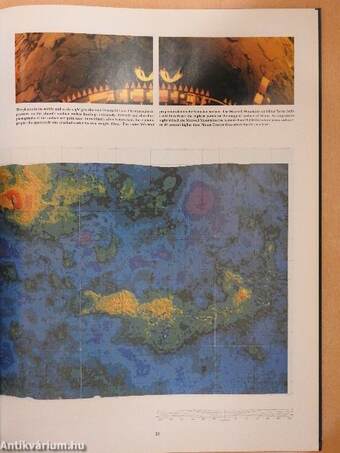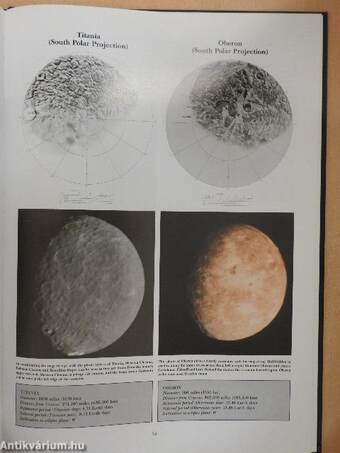1.114.188
kiadvánnyal nyújtjuk Magyarország legnagyobb antikvár könyv-kínálatát
Atlas of the Universe
| Kiadó: | Crescent Books |
|---|---|
| Kiadás helye: | New York |
| Kiadás éve: | |
| Kötés típusa: | Fűzött kemény papírkötés |
| Oldalszám: | 112 oldal |
| Sorozatcím: | |
| Kötetszám: | |
| Nyelv: | Angol |
| Méret: | 37 cm x 27 cm |
| ISBN: | 0-517-06527-4 |
| Megjegyzés: | Színes és fekete-fehér fotókat, illusztrációkat tartalmaz. |
naponta értesítjük a beérkező friss
kiadványokról
naponta értesítjük a beérkező friss
kiadványokról
Fülszöveg
ATLAS
OF THE
UNIVERSE
Kevin Krisi-iunas and Bill Yenne
with over 100 color photographs
Over the centuries the stars have served us for reckoning time, as navigational beacons, and as a basis for myths. At best the unaided eye can detect a couple of thousand stars at any moment. Ancient nomads, astrologers, and storytellers saw patterns in the arrangement of stars in the sky and delineated the constellations. Some individual stars were given names. Only recently have we begun to understand what the stars are, how far away they are, and how they live and die.
As recently as the sixteenth century the stars were considered to be situated just beyond the orbit of the planet Saturn in an Earth-centered cosmos. The Polish cleric Nicholas Copernicus (1473-1543) demonstrated that the motions of the planets against the stars could be more simply explained if the Sun were in the center of our system. He asked rhetorically, 'Who would place this lamp of a most beautiful temple in a... Tovább
Fülszöveg
ATLAS
OF THE
UNIVERSE
Kevin Krisi-iunas and Bill Yenne
with over 100 color photographs
Over the centuries the stars have served us for reckoning time, as navigational beacons, and as a basis for myths. At best the unaided eye can detect a couple of thousand stars at any moment. Ancient nomads, astrologers, and storytellers saw patterns in the arrangement of stars in the sky and delineated the constellations. Some individual stars were given names. Only recently have we begun to understand what the stars are, how far away they are, and how they live and die.
As recently as the sixteenth century the stars were considered to be situated just beyond the orbit of the planet Saturn in an Earth-centered cosmos. The Polish cleric Nicholas Copernicus (1473-1543) demonstrated that the motions of the planets against the stars could be more simply explained if the Sun were in the center of our system. He asked rhetorically, 'Who would place this lamp of a most beautiful temple in a better place.'
If one wishes to study our universe— everything we can know and see, everything that exists—then one must enter the realms of physics and metaphysics, or, more specifically, astronomy and theology. Both deal with questions of the origin of the universe, but with some differences. Astronomy seeks to answer 'When?,' 'How?,' and 'What?' by means of observational methods and the interpretation of data in terms of mathematics and the laws of physics as we understand them. Theology seeks to answer 'Why?' (i.e., 'What is our purpose in the universe?')
This book is your tour of our universe, beginning with the solar system, and then extending our realm of consideration to the local portion of the galaxy, the galaxy as a whole, the nearby galaxies, and, finally, the rest of the observable universe.
Vissza
Megvásárolható példányok
Nincs megvásárolható példány
A könyv összes megrendelhető példánya elfogyott. Ha kívánja, előjegyezheti a könyvet, és amint a könyv egy újabb példánya elérhető lesz, értesítjük.


